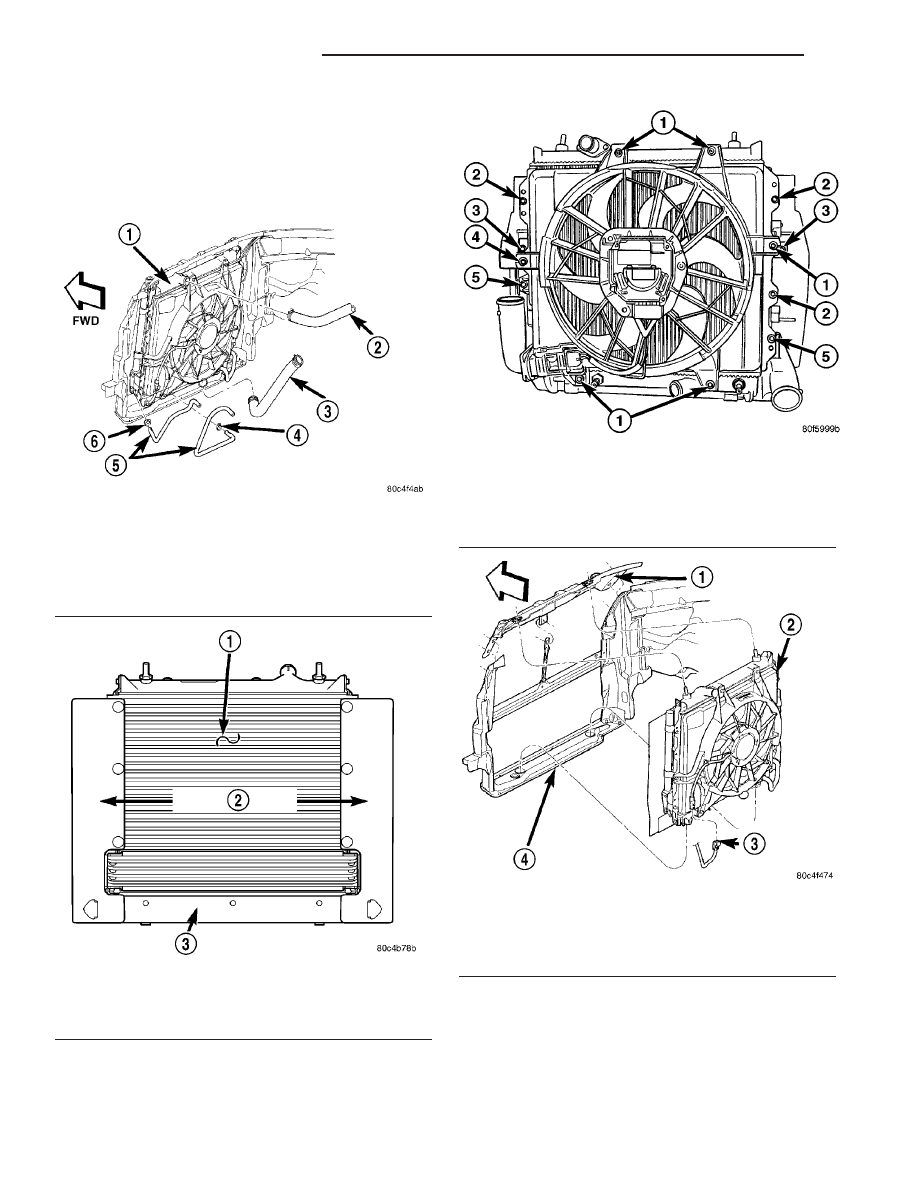Chrysler PT Cruiser. Manual - part 464

(9) Remove radiator assembly (Fig. 36) by lifting it
up from the engine compartment. Care should be
taken not to damage the cooling fins and tubes
during removal.
(10) Non-Turbo Vehicles: Remove the lower air
seal from radiator (Fig. 34).
CLEANING
Clean radiator fins are necessary for good heat
transfer. The radiator and air conditioning fins
should be cleaned when an accumulation of debris
has occurred. With the engine cold, apply cold water
and compressed air to the back (engine side) of the
radiator to flush the radiator and/or A/C condenser of
debris.
Fig. 33 Radiator Hose Connections
1 - RADIATOR
2 - RADIATOR UPPER HOSE
3 - RADIATOR LOWER HOSE
4 - CLAMP
5 - TRANSMISSION OIL COOLER HOSES
6 - CLAMP
Fig. 34 Air Seals
1 - A/C CONDENSER
2 - SIDE AIR SEALS
3 - LOWER AIR SEAL
Fig. 35 Cooling Module Fasteners - 2.4L Turbo
1 - RADIATOR FAN FASTENERS
2 - CONDENSER FASTENERS
3 - TRANSMISSION OIL COOLER FASTENERS
4 - RADIATOR FAN/CONDENSER FASTENER
5 - CHARGE AIR COOLER FASTENERS
Fig. 36 Cooling Module Assembly
1 - UPPER RADIATOR CLOSURE PANEL
2 - COOLING MODULE
3 - RADIATOR FAN CONNECTOR
4 - LOWER RADIATOR CROSSMEMBER
7 - 58
ENGINE - 2.0/2.4L DOHC
PT
RADIATOR (Continued)